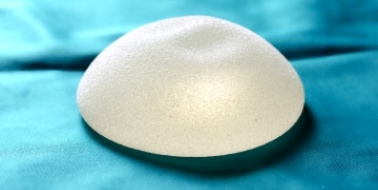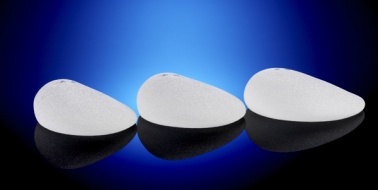2 Just like the primary breast augmentation procedure, breast implant revision techniques are chosen based on the patient's unique anatomy and cosmetic goals. The presence of implant complications will also affect the surgical approach. At our Philadelphia practice, our breast implant revision surgeons are trained in various revision techniques.
Implant Complications
There are several possible implant complications that can occur in patients. In the first few years after undergoing breast augmentation surgery, the risk of experience these complications is low. As the lifespan of the breast implants increases, so does the risk of complications.
Breast Ptosis
Breast ptosis is the sagging of the breast skin that naturally occurs with age and weight fluctuations. When the skin on the breasts has become loose, patients will require a breast lift in combination with implant replacement.
Capsular Contracture
Capsular contracture is a condition in which hardened scar tissue forms around the implant. Regularly massaging the breasts and placing the implants below the chest muscle can prevent capsular contracture. When capsular contracture does occur, it can put pressure on the implant, causing pain and making it appear misshaped; the scar tissue also makes the breasts feel unnaturally hard. In the case of capsular contracture, the hardened capsule (the scar tissue) around the implant may need to be removed or opened. The implant is also removed, and the new implant may be placed under the chest muscle to decrease the chances of scar tissue from re-forming.
Double-Bubble
The double-bubble deformity results when there is volume both above and below the breast implant crease. This may be caused by an implant that moves down the pocket and sits partially below the inframammary crease. Double-bubble may also be caused when a breast lift technique should have been performed at the same time as breast augmentation surgery. In the case of double-bubble deformities, revision surgery may involve the release of constricted muscles, reconstruction of the inframammary fold, tightening of the implant pocket, moving the implant above the muscle, and breast lift surgery.
Implant Deflation
Breast implants are not made to last forever. Eventually, the implant's movement in the pocket will cause the implant shell to wear. When there is a tear in the implant, both implants should be removed. Revision surgery after implant deflation is fairly straightforward; the old implants are removed, and in most cases, replaced with implants of a similar or different size.
Implant Displacement
Implant displacement refers to implants that sit too low, too high, or too far to either side of the breasts. If the implant pocket was made too large or has become stretched after surgery, the implant may sit too low, resulting in a bottomed-out appearance. If the pocket is too small or not positioned correctly, the breasts may sit too high on the chest or too far apart from one another. In the case of implant displacement, the pocket size or location may need to be adjusted.
Implant Rippling
In the worst cases of implant rippling, the wrinkled implant can be seen and felt through the skin. When this occurs, patients may pursue breast implant revision surgery to correct the condition. Implant rippling is caused when saline implants are not filled to the necessary capacity or there is inadequate tissue coverage for the implants. In cases of implant rippling, the implants may need to be replaced, and our surgeons may recommend that the new implants be placed below the chest muscle.
Poor Implant Coverage
Insufficient tissue coverage for the implant can make implant rippling more obvious and result in a less natural appearance. In these cases, our surgeons may recommend that the implants be moved below the chest muscle and that the implants be replaced. If the patient feels that the breasts look unnatural, a smaller breast implant may be recommended.
Symmastia
Symmastia is a condition in which the breast tissue converges, resulting in a uni-boob appearance. Correction of symmastia may involve internal sutures and adjustment of the implant pocket.
Breast Implant Exchange Options
When patients undergo breast implant revision surgery, they must decide if they want to replace their implants with a similar type of implant, replace their implants with a new type of implant, or have them removed completely.
In cases in which patients elect to change the size, shape, or feel of the breasts, they have the following options:
Breast Size or Profile
The implant size can be increased or reduced, and the profile of the implant can be adjusted to change the shape of the implant.
- Increasing the size of the breasts: If the patient chooses to have a larger implant placed, our surgeons will increase the size of the implant pocket.
- Reducing the size of the breasts: If the patient wants to reduce the size of the breasts, the pocket will need to be tightened and the patient may also require a breast lift to produce good results.
Implant Filler Type
Silicone gel implants were approved by the FDA in Novemeber of 2006, and cohesive silicone gel implants were approved by the FDA in 2012. Now that these two options are available, women may choose to replace their old implants with silicone gel or cohesive silicone gel implants.
Philadelphia Breast Implant Revision Consultations
Contact our Philadelphia practice to schedule your breast implant revision surgery consultation with the surgeons at Jefferson Plastic Surgery.



